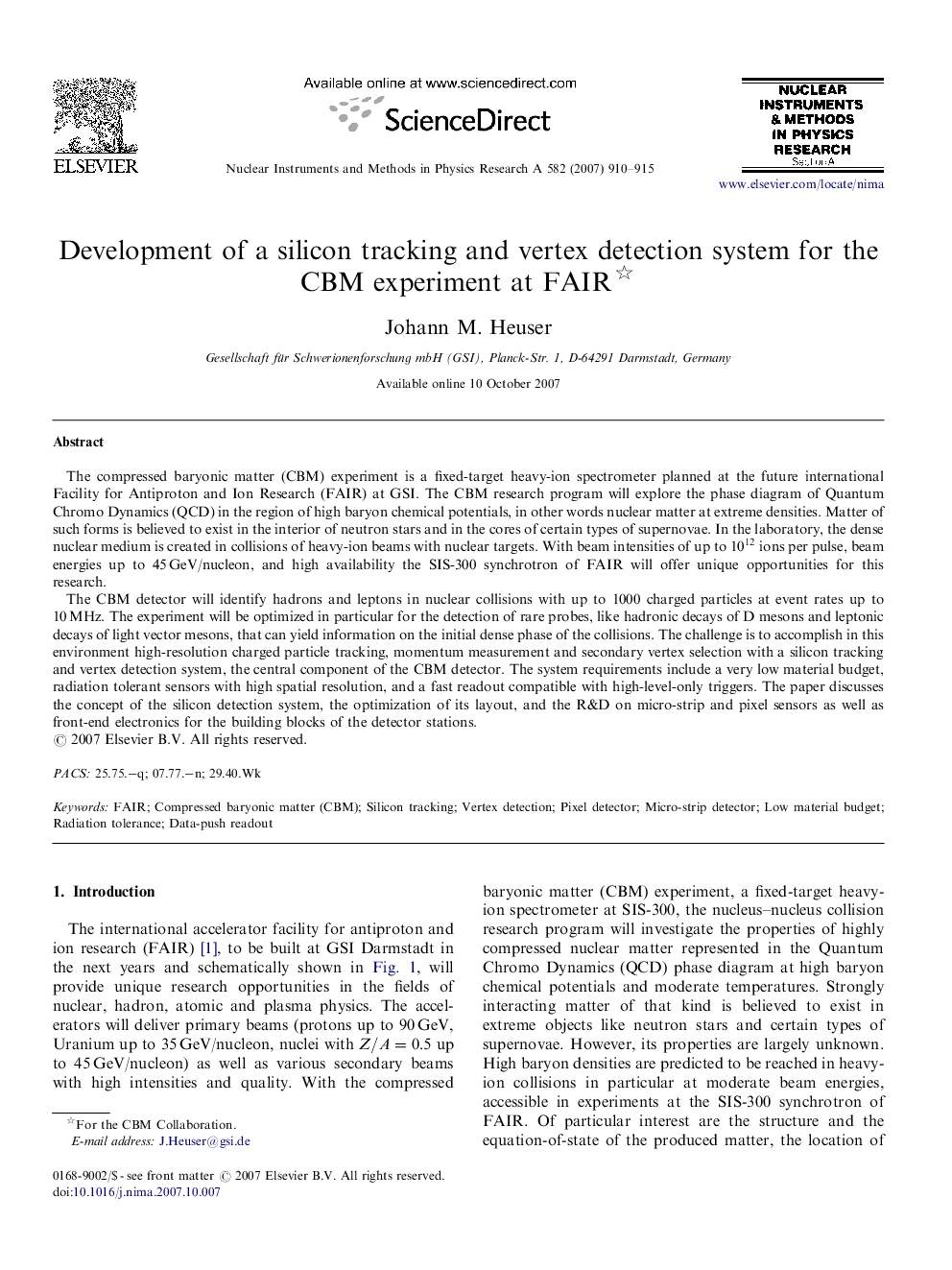| کد مقاله | کد نشریه | سال انتشار | مقاله انگلیسی | نسخه تمام متن |
|---|---|---|---|---|
| 1831392 | 1027495 | 2007 | 6 صفحه PDF | دانلود رایگان |

The compressed baryonic matter (CBM) experiment is a fixed-target heavy-ion spectrometer planned at the future international Facility for Antiproton and Ion Research (FAIR) at GSI. The CBM research program will explore the phase diagram of Quantum Chromo Dynamics (QCD) in the region of high baryon chemical potentials, in other words nuclear matter at extreme densities. Matter of such forms is believed to exist in the interior of neutron stars and in the cores of certain types of supernovae. In the laboratory, the dense nuclear medium is created in collisions of heavy-ion beams with nuclear targets. With beam intensities of up to 10121012 ions per pulse, beam energies up to 45 GeV/nucleon, and high availability the SIS-300 synchrotron of FAIR will offer unique opportunities for this research.The CBM detector will identify hadrons and leptons in nuclear collisions with up to 1000 charged particles at event rates up to 10 MHz. The experiment will be optimized in particular for the detection of rare probes, like hadronic decays of D mesons and leptonic decays of light vector mesons, that can yield information on the initial dense phase of the collisions. The challenge is to accomplish in this environment high-resolution charged particle tracking, momentum measurement and secondary vertex selection with a silicon tracking and vertex detection system, the central component of the CBM detector. The system requirements include a very low material budget, radiation tolerant sensors with high spatial resolution, and a fast readout compatible with high-level-only triggers. The paper discusses the concept of the silicon detection system, the optimization of its layout, and the R&D on micro-strip and pixel sensors as well as front-end electronics for the building blocks of the detector stations.
Journal: Nuclear Instruments and Methods in Physics Research Section A: Accelerators, Spectrometers, Detectors and Associated Equipment - Volume 582, Issue 3, 1 December 2007, Pages 910–915